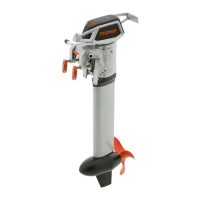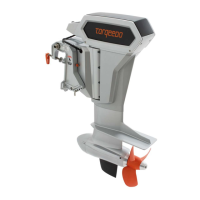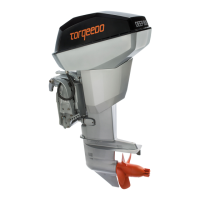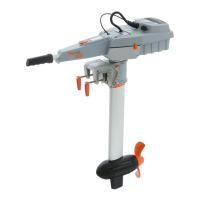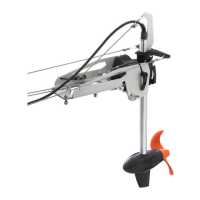60
DeutschEnglish
4.5 Basic information on battery supply
Principally, Cruise R and Cruise T models may be operated with lead-acid, lead-gel, AGM
or lithium-based batteries.
For performance and ease of operation reasons, Torqeedo recommends to connect the
Power 26-104 (cf. chapter 4.6).
You may, however, also connect conventional lithium based batteries as well as lead-
acid, lead-gel or AGM batteries without any problem (chapter 4.7)
4.5.1 Short remarks on battery supply
In general the Cruise models can be operated with lead-gel, AGM or lithium-based batte-
ries.
We do not recommend using starter batteries as they can be damaged after a few cycles
if the discharge is lower. If lead-based batteries are to be used we recommend so-called
“tractionbatteries”or“deepcyclebatteries“thathavebeendesignedforanaverage
depth of discharge per cycle of 80 % as they are used for example in fork lift trucks.
So-called“marine”batteriescanalsobeused.Herewerecommendhighernominal
capacities so as not to exceed a 50 % depth of discharge.
To calculate the travel times and range of the batteries, you need to know the battery ca-
pacity. In the following, this is stated in watt-hours [Wh]. The number of watt-hours can
easily be matched with the input power of the motor in watts [W]: The Cruise 2.0 R has
an input power of 2,000 W and consumes 2,000 Wh in one hour at full speed. The Cruise
4.0 R has an input power of 4,000 W and consumes 4,000 Wh in one hour at full speed.
The nominal capacity of a battery [Wh] is calculated by multiplying the charge [Ah] with
the nominal voltage [V]. So a battery with 12 V and 100 Ah has a nominal capacity of
1,200 Wh.
Ingeneral,lead-acid,lead-gelandAGMbatteriesdonotfullyprovidethebattery’s
calculated nominal capacity. This is in particular due to the high current capabilities of
lead batteries. In order to counteract this effect we recommend using larger batteries.
For lithium based batteries this effect is negligible.
In addition to the actual available battery capacity of the boat type, the selected output
level (lower life and range at higher speed) and the external temperature also play an
important role for the range and life expected.
